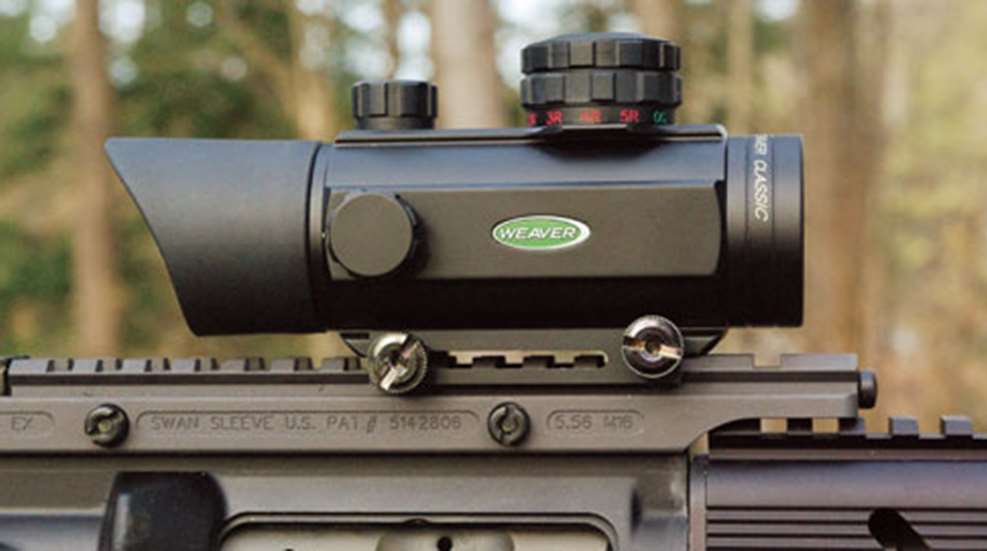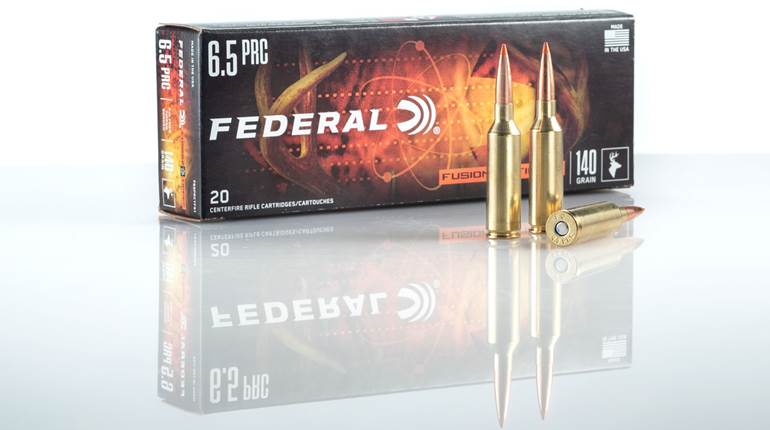
By the turn of the 20th century the riflescope was not entirely unheard of in both target shooting and hunting. J. Stevens Arms and Tool Co. introduced a line of scopes in the early 1900s. In 1909 Winchester brought out a line of riflescopes. Both were later sold to Lyman.
In the 1920s many European scope makers were importing into the U.S., but the scopes were expensive and didn’t catch on with the American market. In addition to the Winchester and Stevens scopes, those made in the United States by J.W. Fecker were popular with American shooters. Fecker employed a man by the name of John Unertl, who in 1934 started his own scope company. It’s likely that Noske scopes were considered the best of the domestics in the 1930s. Elmer Keith was quoted as saying, “To Rudolf Noske goes the credit for making the first good American hunting glass.”
But, even with all this progress, scopes still were not the predominant rifle sighting system for mainstream hunters. They were too expensive, fragile and unreliable.
It took a visionary to make the riflescope mainstream. Henry Ford may have parked a car in every driveway, but it was William R. Weaver who put a scope on every rifle. He did this by following the simple template for success in American business. He gave people a high-quality product at an affordable price.
Before Weaver introduced his Model 3-30 scope in 1930, the options were limited. American shooters could have a Zeiss for $70, or an American-built Noske for $50. Neither included a mount, which added significantly to the price. Considering that the average annual income was $1,368, spending a couple of week’s worth of wages on a scope was not an option for most hunters.
The Weaver 3-30 scope, complete with a mount, sold for $19 (about $230 in today’s money). Suddenly gun racks up and down Main Street America were filling with scoped hunting rifles. By 1934 Weaver was selling his Model 329 scope with a choice of mounts for $4.75. In that same year, Weaver also offered the Model 333 scope for .22 rimfire and .22 Hornet rifles for $7.75. The 4X Model 344 was a whopping $8. Both came with a mount.
The Beginning of Weaver
Weaver didn’t start out in the scope business. In fact, he started in his small Lawrenceburg, Ind., shop filling a contract his father had with the state of Indiana for 800,000 license plates. Weaver designed and built the tooling necessary to complete this order. Then he turned his talents to building riflescopes.
Weaver designed and made all his own tooling and did all the manufacturing work for his scopes on-site. Weaver ground his own lenses, machined the steel, blued the parts and even made the mounts in his shop on Water Works Road in Newport, Ky. During his tenure he never wavered on insisting that everything in his products be 100 percent made in America.
In 1933 Weaver and two helpers loaded a truck and moved the shop to El Paso, Texas. His first shop was on Main and Campbell streets. He moved to the other side of town in 1936, employed 50 workers, and in 1939 moved again to expand enough to meet demand. In 1940 they built a new factory at 1800 First St. In just a decade Weaver had grown to become the largest producer of riflescopes in the world.
The year 1964 saw the construction of a new 10,000 sq.-ft., air-conditioned factory. Weaver employed more than 600 people by the late 1960s and was making more than half the scopes built in America.
His first scope, the 3-30, was made from 1930 until 1947 and featured a 2.75X magnification with a 35-foot field of view at 100 yards. The eye relief was 3.5 inches, the length 10.5 inches and the weight 10.25 ounces. The tube diameter was 3/4 inch, and it was even offered with 1/4-minute click adjustments. By 1933 a 4X model called the 4-40 was introduced, soon followed by the “less than five bucks scope,” the 3-29.
Weaver supplied 36,000 scopes and sights to the military during World War II and so was able to seamlessly return to making scopes for sportsmen after the war ended, in contrast to many of its competitors.
Based on developments made for the military, in 1947 Weaver produced the K2.5X and K4X scopes with 1-inch-diameter tubes. They soon became the most popular. The idea of a 1-inch tube caught on and even today is the standard among American sport shooters. It allowed a bigger, brighter picture without a significant increase in weight. Actually—at 9.25 ounces—the K4 was significantly lighter than many of its predecessors. The K4 Weaver might well be the most famous scope ever produced. It is certainly one of the most successful, and undoubtedly a trend-setter for American riflescope design.
In 1948 the K6 was added to the lineup. In 1950 the K8, K10 and the variable 2.75-5X KV were added. The K10X was groundbreaking for varmint and target shooters and, of course, the concept of a variable-power scope was a prelude to the standard that remains even today.
In 1956, Weaver introduced a constantly centered reticle, which was another huge leap forward in riflescope design. Weaver continued this trend of constant innovation and introductions all through the 1960s, which might have been part of the problem. Weaver was having growing pains and experiencing difficulty with the cost of expansion. He was forced to sell the company to Olin Corp. in 1968.
In 1970 Weaver introduced the Classic Series, featuring anodized aluminum tubes with non-removable eyepieces. It was the first departure from the steel tubes that made Weaver famous. This trend of new models continued through the following decade with more new models than can be listed here.
Bill Weaver died on Nov. 8, 1975, at the age of 75, and by the mid-1980s the company was foundering. It is noteworthy that in 1982 Weaver entered the handgun scope market with the P2S. The “S” stands for stainless steel, which was another first for the company. Competition from offshore makers and some American competitors was eroding its market share, and in 1984 Weaver closed its doors. Many thought this was the end of a great American gun industry legend. In many ways it was.
But great names in the gun industry typically have a bit of Phoenix in them, and they often rise from the ashes in rebirth. That happened to Weaver four years later. In 1988, Omark Industries of Lewiston, Idaho, a division of Blount, took over operations and reintroduced Weaver riflescopes. Although the legendary El Paso-made, steel-tube Weaver scopes were gone forever, the Weaver name lived on with a line of imported scopes.
The quality of imported scopes was getting much better. With inexpensive labor in Asia, the prices remained low. At the same time in America, rising labor costs, taxes and regulations were making it hard to produce high-quality scopes for a budget price. Weaver, perhaps by accident, was again leading a major shift in the riflescope market direction. While the new Weavers were of far better quality than what we had often expected from imported Asian scopes at that time, the price was reasonable. They didn’t try to compete with the top-of-the-line American or European scopes, but rather carved out a mid-market niche with an excellent price-to-quality ratio.
I remember testing some of the new Weaver scopes from that era and being very pleased with their durability and optical quality. Of course they could not compete with the best American or European scopes, but those scopes, in turn, could not compete with Weaver on price. The Weavers were much better than some of the other imports at the time, and they followed the long Weaver tradition of affordability.
Blount’s outdoor companies were acquired by ATK in 2001 and in 2002 ATK sold off its optics holdings, including Redfield, Simmons and Weaver, to Meade Instruments. ATK, however, kept the rings and mounts part of the company, including Weaver mounting products.
Weaver Mounts
It should be noted that the Weaver mounting system was a huge success. The first Weaver mount was the V Mount offered with the Model 3-30 scope. It was a fragile-looking affair with an odd-looking spring on the side. That was quickly replaced by the S- and M-series mounts. These were the first in a series of stamped-metal, side mounts that survived until the 1980s.
In 1947 Weaver added the U and B mounts. The U mounts came in both top and side mounts. The B mounts were designed to position the scope as low to the rifle as possible. They also had a thumbscrew, quick-release feature. In 1950 Weaver introduced the Detachable Split-Ring Side Mount.
What was to become Weaver’s flagship mount, the Split Ring Tip-Off mount, was introduced in 1953. This ring uses a stamped steel top with a hook on one side and a lip with two screw holes on the other. It mates with a solid steel bottom. The “hook” clips under a lip on one side of the base and the screws fit into threaded holes on the other. The rings were then attached to a “rail” base with a large thumbscrew.
Mounting a scope in those rings would drive you crazy as the scope tube tended to rotate slightly when the screws were tightened. The system required a “guesstimate” about how far to position it in the opposite direction, so that when the screws tightened, the scope’s crosshair came to rest in the correct orientation.
If tightened too much the rings would bend and distort even the best steel scope tubes. But, that might be their best feature. While it messed up the cosmetics of the scope, the distortion and damage also helped grip the scope and keep it from slipping under recoil. Also, the flexible steel top ring would bend to the shape of the scope tube. No need to lap these top rings; they were “self” adjusting for grip surface. Better still, they were inexpensive. In 1963 the rings and bases retailed for only $9.75. Weaver still makes these rings, although the bottoms are now aluminum, so you can’t “crank” the screws as tight without stripping, which is probably a good thing.
In my neck of the woods, New England, another innovative Weaver mount was popular with deer hunters. The one thing we could depend on in Vermont during November was foul weather. The Weaver Pivot Mount would allow a shooter to pivot the scope to the side on a hinge so that the back-up iron sights were cleared for use if snow or rain had put the scope out of operation. When you were done, you could swing the scope back and a couple of spring-loaded clips would snap in and hold it in place. When I started hunting deer in the mid-1960s, almost every serious deer hunter I knew had one of these mounts. Even today the Weaver style of mounting is an industry standard, and Weaver competitors use the Weaver name to describe the rails and rings used for this system.
Reunited
The siblings were reunited in 2008 when ATK bought Weaver Optics back from Meade. Now the scopes and mounts are back under one company. Weaver scopes today still represent one of the best buys in optics. They are dependable enough that I trusted a Weaver Super Slam 3-15X 50 mm Illuminated Reticle scope on my rifle for a one-gun safari in Zimbabwe last year. The Weaver scope performed great under tough shooting and hunting conditions.
After 80 years in business the Weaver name has always represented solid performance for a fair price. While the owners and locations of manufacture have changed through eight decades, that standard has not. This powerful name in sport optics continues the path set so long ago by William R. Weaver. The company may have wavered and stumbled a bit through the years, but it never lost its way. Today, under ATK’s leadership, we can expect the Weaver brand to continue to bring fair-priced and high-quality scopes and mounts to America’s shooters and hunters.





































